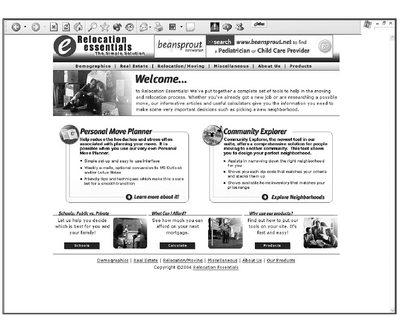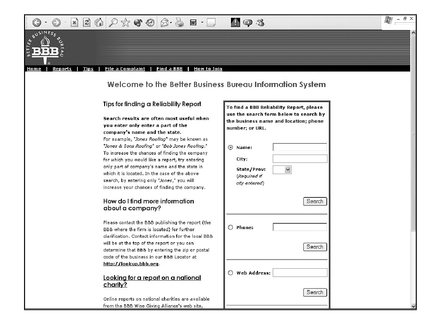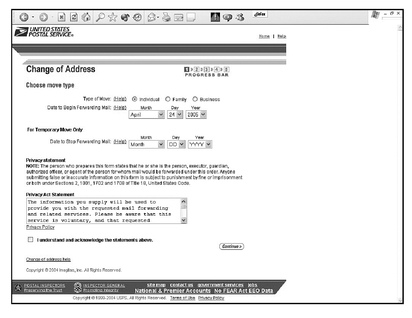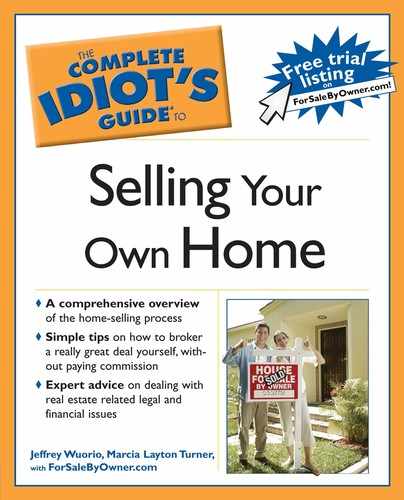Chapter 20
First Sell, Then Buy—Juggling the Two
In This Chapter
• Buying time
• Staying in place
• Multiple moves
• Financial incentives to make it work
In the best of all possible worlds, you find a home you love and you buy it. You move in. Then you put your current home on the market and it quickly sells. Such a scenario avoids all the hassles of trying to time closings and move-out dates, which can drive homeowners batty. But not everyone has the assets to afford two mortgages at once, which this situation requires. Most homeowners need to buy and sell simultaneously and sometimes find themselves squeezed between two homes.
Fortunately, this chapter covers the options that allow you to straddle your two homes without moving twice, which no one wants to do. From staying in your current home longer to negotiating pre-possession, most homeowners find a way to make it work without moving into temporary housing.
Setting the Timing—How to Juggle a Sale and Purchase Smoothly
To avoid moving out of your current home and putting everything into storage, try to schedule the closing for your purchase and sale on the same date—one after the other. Closing on the same day ensures you can move your belongings right into your new home, rather than storing them indefinitely. If that won’t work, storing your stuff is one option, as is trying to get permission to stay in your old home until your new home is available.
A number of possible timing scenarios exist. These include:
• Move in early. If your new place will be available soon, you can start to cart belongings over there for storage before you have to close on your current home. You may be able to do a fair amount of moving yourself, because you have the extra time.
• Move in and out the same day. If you won’t be able to get into your new place until the day you close on your existing home, you need to begin checking out who will be available to assist you. Believe me, you’ll need help!
• Move out after closing. If you can’t move to your new address until after you sell your current home, you’ll want to try to negotiate with the buyers to give you some extra time to move out. There are several ways this arrangement can be structured.

Tools of the Trade
A sale-leaseback is an agreement in which the buyer of a home consents to allow the former owner to remain in the home for a specified period of time beyond the official closing date. In some cases, the buyer receives a payment, similar to a rental fee, and in others, such an arrangement is part of the sale negotiation.
Staying Put
If you know it will be several weeks, generally no more than 60 days, before you can move into your new home (and you want to avoid moving twice), you can try to negotiate with the buyer to get some additional time. For instance, if you’re building a new home and its completion has been delayed, you may be able to lease or rent your home from the new owner after closing, called a sale-leaseback, or rent-back. In some cases, sale-leasebacks call for the seller to pay the buyer for the additional time in the house, while other deals are simply part of the purchase agreement.
Because of horror stories about sellers refusing to get out of the house after closing, some buyers may be reluctant to allow you to stay in the home after closing, fearful that you’ll never leave or that they’ll end up without a place to live. But it’s worth asking if you know you’ll need the extra time after closing.
Move in Early
Similarly, as the buyer of your new home, you should inquire about early possession. Just as sellers may be granted permission to stay in their residence after the official closing date, buyers may be granted permission to move in early. In one family’s case, they received permission to move some of their belongings into their new home’s garage the week before closing, which helped them get everything out of their old house on time.
Another way to close on your new home before moving out of the old one is to arrange bridge, or swing, financing, which would allow you to buy the new home before you’ve sold the old one, giving you a window of a few days or weeks to get settled.

Tools of the Trade
A bridge loan is a financing tool that bridges the gap between when you close on your old home and your new home. Many sellers need the funds from their home sale in order to close on the new home, but sometimes it’s just not possible to schedule them simultaneously. By using your current home as collateral, you may be able to get a bridge loan to enable you to buy your new home, which you then pay off along with your old mortgage when your current home sells. Of course, the longer the loan, the higher the fees.
Because of the higher cost of bridge loans, you may want to check into less expensive, traditional financing options, such as a home equity loan, second mortgage, or cash-out refinance on your current home. The only downside is that having such debts on your credit record may make it more difficult to qualify for the mortgage on your new home.
Or if you have the finances to afford it, you can save the cost of the bridge loan by qualifying for a mortgage on your new place while you still own the old one. Holding two mortgages, even just for a week or two until the first home sells, will generally end up saving you money because bridge loans are made at higher interest rates.
Tools for Dealing with Timing Problems
If you discover you need extra time in your current home or want to try to move into your new home early, you may have difficulty convincing the buyer or seller to agree. However, there are a couple of legal documents that can help you in your quest.
Indemnification Agreement
If you find that staying in your home after the closing date would be advantageous, because you can’t move into your new space yet, ask the buyer as soon as possible. No one likes to be surprised at the eleventh hour, so the earlier the subject is broached, the better. Generally, those unwilling to allow you to stay take that position because they have nowhere else to go or because they are nervous about damage occurring to their property after they’ve bought it.
To calm those fears, offer to sign an indemnification agreement. Such a document promises you will leave the residence in the same condition it was in before closing, when they did their final walkthrough, and if any damage does occur, you will have it repaired at your expense.
Be aware that this does create a risk for you, the seller. If that refrigerator you sold with the house suddenly dies, or starts leaking, the indemnification agreement requires you repair or replace it. Or if your toddler one night spills paint all over the off-white carpeting, you are now responsible for cleaning or replacing it. Any misstep can be costly, now that you’re effectively renting your old home.

Tools of the Trade
An indemnification agreement is a legal document buyers and sellers sign in which the seller agrees to maintain the home in its current state, repairing or replacing anything that becomes damaged or broken during the time they possessed it.
Before you start worrying about sale-leasebacks and indemnification agreements, keep in mind that most buyers want to move into their new home as soon as possible, so this will likely not be an issue for you. For many buyers, any potential delay in a move-in date will discourage them from making an offer in the first place.
Keep in mind, you’ll be in a much better negotiating position if a sale-leaseback isn’t a requirement of the sale.
Offer to Pay for Temporary Housing
If you find the buyer would be willing to let you stay in your home if they didn’t need a place to go, you may want to offer to pay for their temporary housing until your home is ready for move-in.
When you realize that you’re going to need temporary housing, either in a hotel or furnished apartment, offering to pay for the buyer’s expenses may earn you permission to stay where you are until you can get into your new place. It comes down to a question of who’s going to the hotel, and if they’ve already moved out of their place, they may be more willing to wait it out in a hotel a couple of days, especially if you make it worth their while. Either way, you’ll have to pay housing costs, but at least this way you don’t have to move twice. That’s certainly worth something!
The Path of Least Resistance—Options If You Don’t Want to Buy Right Away
Of course, in some situations, it may be advantageous to sell your current home before you’ve even found a new one, such as if the housing market is booming and you want to cash out at the top.
In that case, you can consider moving in with friends or relatives, signing a month-to-month lease on another home, moving into your vacation home at the beach, if you have one, or simply putting your stuff into storage and traveling.
And when you’re ready to buy a new place, you’ll have the added advantage of not having to make an offer to purchase contingent on the sale of your home—it’s already sold—which in some markets can make you a more attractive buyer. In some cases, contingencies can make or break an offer.
Getting Out of Dodge—Relocation Resources
As soon as you have a signed contract to buy or sell a home, whichever comes first, you’ll want to start planning your move. Whether you’re headed down the street or across the country, relocating your household takes time and effort.
Many websites are out there that can help you map out your moving timetable, calculate moving costs, create an action checklist, and gather important information about your new home base. Some you may find useful include:
• www.relocationessentials.com/home.htm—Whether you have a new job or are exploring the possibilities of a move, this site has everything from moving planners to community data to school recommendations and mortgage calculators (see the following figure).
Websites can give you a great head start on your moving plans and help get you organized well in advance of move-out day.

• www.monstermoving.monster.com. Plan your move, get quotes from local companies, and make use of their free address changer.
• www.homefair.com/homefair. Offers moving help, checklists, calculators, and community information.
• www.dod.mil/mapsite/relocate.html. Help for relocating military personnel.
Obtain as much information as you can when you compare price quotes, look into storage and moving, explore schools and neighborhoods, and get set for the exciting journey.
To Move or Be Moved?
Of course, after deciding to sell your home, one of the first decisions you have to make is whether to move yourself to your new place, or whether you should turn over the process to a professional moving company.
Even then there are different levels of involvement—from pack, load, unload, and unpack, to just load and unload. Generally, the amount of time, energy, and money you have will determine how much help you should get—the more time and energy you have, the less you may want to pay someone else for assistance.
Self-Service Move
The biggest advantage of handling a move yourself is the savings. Except for the cost of a truck or van to haul your belongings to your destination, which is optional if you already own or have access to a truck, you may have no other expenses.
However, to make your move smoother and less painful, you may want to consider:
• Asking friends and family to lend their brawn in getting large pieces of furniture on and off the truck.
• Buying boxes, or collecting them from area retailers for free, to pack up smaller household items.
• Arranging for a short-term storage facility to hold items you must get out of your place but which you’re not sure will fit in your new home.
• Hiring professionals, at an hourly rate, to handle the heavy lifting.
• Turning over the heaviest, or most valuable items, to a professional mover to relocate for you.

Selling Smarts
Summer is the most expensive time to move because professional moving companies are busy. Waiting until after Labor Day can yield a savings of up to 30 percent. If you need to move during the summer, ask about mid-month or weekday rates, which are generally cheaper.
Although an investment in a professional mover may increase your expenses, your important possessions will also be insured against damage—something you give up when you ask your buddies to help you out. You also reduce your liability in case one of your helpers becomes injured while carrying your grandmother’s antique bureau down several flights of stairs.
A compromise between moving yourself and a professional mover is a self-service move, where you are responsible for loading and unloading your possessions on the truck, but the mover handles transportation to your new home. If you have a lot of stuff to move, or are moving several hours away, this may be a better alternative than trying to handle the move yourself in several trips back and forth.
Full-Service Move
If you decide to explore having a professional moving company handle your move, here are some recommendations for finding a good one:
• Ask for recommendations from friends, family, neighbors, and local real estate agents, who have some influence if anything goes wrong.
• Get a list of certified movers who are members of the American Moving and Storage Association, which can be found at: www.moving.org (see the following figure). Click on the Mover Referral Service button.
Selecting a quality mover can make the difference between furniture and important possessions arriving in one piece or several. Choose your moving company carefully.

• Verify whether a business is reputable by calling your local Chamber of Commerce to ask about any complaints and by visiting the Better Business Bureau online at www.bbb.com to investigate each company’s business practices (see the following figure). 

Finding and hiring a reputable mover is half the battle, and you get what you pay for in many respects. Don’t base your choice of a mover on cost alone—check out the Better Business Bureau’s records first to learn how many former customers were happy with the company’s service.
• Be wary of Internet databases listing movers—There is no way to distinguish a quality moving company from a fly-by-night crew.
• Ask movers to provide references, and take the time to call them!
After you’ve put together a list of possible movers, you’ll want to:
• Call several—don’t settle on the first one.
• Ask them to come to your home to give you a price quote based on the amount of furniture, boxes, and miscellaneous items to be moved.
• Ask if the quote is binding—that is, whether the final cost could be higher than what was quoted.
• Find out what each mover’s formula is for calculating the price quote they’ve given you. Is it based on the number of pieces of furniture? Does it factor in the distance you’re moving? Is it based on the estimated weight of your belongings? And what is the weight?

Sales Snafu
Costs-per-pound vary widely from mover-to-mover. For example, one mover in California quoted $.11 per pound for 8,000 or more pounds moved, or $.14 per pound for 1,000 to 2,000 pounds. A mover in New York, however, quoted $.30 per pound. There is frequently a premium for stairs climbed as well.
Knowing how each mover came up with your quote will make it easier to compare several movers.
• Learn whether the mover offers “full value protection” or “full replacement value.” If so, the mover will be responsible for compensating you based on the cost to replace anything damaged in transit, rather than the current market value of the item, which is frequently far less than what you paid to buy it.
• Ask for and complete a “High Declaration Value” form to itemize priceless or precious belongings prior to the move. This brings attention to your high value items and establishes their value up front in case anything gets damaged in transit.
The most expensive type of move includes packing up your home in boxes, loading it on the moving truck, driving it to your new place, unloading the boxes and furniture, and unpacking it for you. Clearly, this involves the least amount of effort on your part, which is the way some families choose to go.

Tools of the Trade
A binding quote is a price the moving company agrees to charge for your move; that price cannot change unless the terms of the move change, such as the addition of several more pieces of furniture. A non-binding quote is more of an estimate, which can go higher or lower come moving day. Some movers use not-to-exceed quotes, which guarantee the final cost of your move will be either the original quote or less—but it won’t be more. If you have the option, this is the type of quote you want to see.
However, you can also choose to take care of the packing and unpacking yourself, thereby reducing your moving bill while still preserving your body from unnecessary punishment. Whether your company is pitching in to pay for a relocation may also factor into whether or not you spring for the packing service.
Moving is time-consuming, hard work, not to mention stressful. But everyone gets through it, and you will too.
Online Relocation Resources
For more information about topics covered in this chapter, check out the following websites:
• www.irs.gov. Check out IRS Publication 521 “Moving Expenses” to learn whether your move is totally or partially tax deductible.
• www.moving.org/before/handbook.pdf. The website for the American Moving and Storage Association offers a free consumer moving guide. Download it here.
• www.usps.com. Complete change of address forms are available online. Fill these out so your mail is forwarded to your new residence (see the figure that follows).

Make sure your mail is forwarded to your new address by completing the online mail forwarding forms here.
• www.moving.org. Get a list of certified movers who are members of the American Moving and Storage Association by clicking on the Mover Referral Service button.
The Least You Need to Know
• If you can afford to hold two mortgages simultaneously, so you can buy a new place before selling your current home, you’ll find the whole issue of moving and relocating your possessions to be much simpler.
• If you can’t afford two mortgages, you can still explore a bridge loan, which allows you to close on your new home before you sell the current one.
• If you can’t move into your new home until after you have to be out of your old one, ask the buyers for a sale-leaseback, which means you rent your old home until your new one is available.
• Don’t wait until after you’ve moved into your new place to decide what to keep and what to throw away—you’ll waste time, energy, and money packing items you may end up tossing later.
• Although relying on a rented truck and friends to help you move may be cheaper, you take a risk with valuables, which aren’t covered by insurance, and with your back, which may not be up to hauling huge furniture to and from the moving van.
..................Content has been hidden....................
You can't read the all page of ebook, please click here login for view all page.
